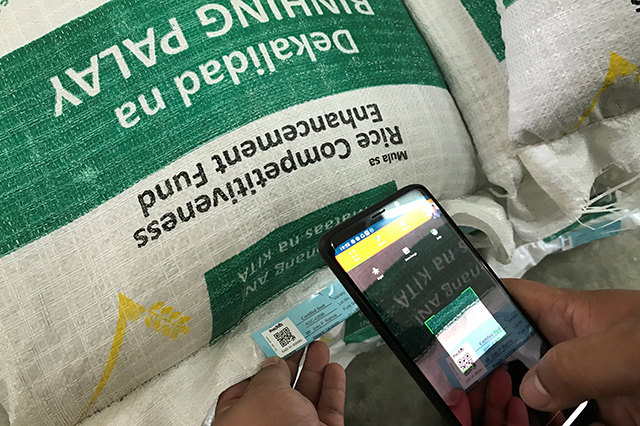
Claiming subsidies from the government is a pleasure; but waiting in a long queue is a pressure. This is why through digital technology, the Rice Competitiveness Enhancement Fund (RCEF)-Seed Program has reduced farmers’ “agony” in seed distribution areas.
Documentation reports during the program’s first year of implementation show farmers waiting in long lines before finally getting their bags of certified inbred rice seeds. With Binhi e-Padala, a digital voucher system launched in 2020, farmer-beneficiaries with active telephone numbers would just wait for a text message about their scheduled seed distribution and pick-up points. They then get their seeds in as fast as two hours.
Jayson Albay of La Union, one of the farmer-beneficiaries, said Binhi e-padala is convenient for farmers who reside in remote areas. “We no longer need to wait for long hours to get our seeds. Today, I received the seeds with no hassle,” Albay shared. He also mentioned that the new system helps limit the crowd and minimize possible exposure to COVID-19 because of the assigned schedules.
Meanwhile, Victoriano Petina Jr., also of La Union, president of the BUED CIS DAM 1 Irrigators’ Service Association, Inc., said the system allowed them to choose their preferred varieties. “This digital system informs us about the seed distribution schedule so farmers don’t need to travel back and forth just to check their schedules. Now, we can also select our preferred varieties unlike before when we were left with whichever variety is delivered in our area,” Petina was impressed.
Dr. Flordeliza Bordey, RCEF Project Management Office director, said the Binhi e-Padala accelerated seed distribution and enabled farmers to receive the certified seeds before planting schedule starts. They are now also exploring the online preregistration scheme as another way to reduce long queues during seed distribution.
The RCEF seed monitoring system and RCEF seed distribution app were also developed to document the program activities and beneficiaries. In areas with limited internet connectivity, the Seed distribution has improved significantly across five seasons of implementation on account of the close coordination of DA-PhilRice with and support from the DA-Regional Field Offices (DA-RFOs), LGUs, and the Bureau of Plant Industry-National Seed Quality Control Services (BPI-NSQCS).
Partnerships with the seed grower cooperatives and associations were also tightened. From its maiden implementation in 2020 dry season (DS) with a 69% delivery rate and 65% distribution rate, the RCEF Seed Program had achieved 104% delivery rate and 98% distribution rate in the 2022 DS (Sept. 16, 2021 – March 15, 2022), thanks to the system.
On its sixth season of operationalization, processes are being maintained and polished to ensure that farmers are well-served amidst the overstaying health crisis. [with reports from FRANZEL MONIQUE D. BONILLA]




